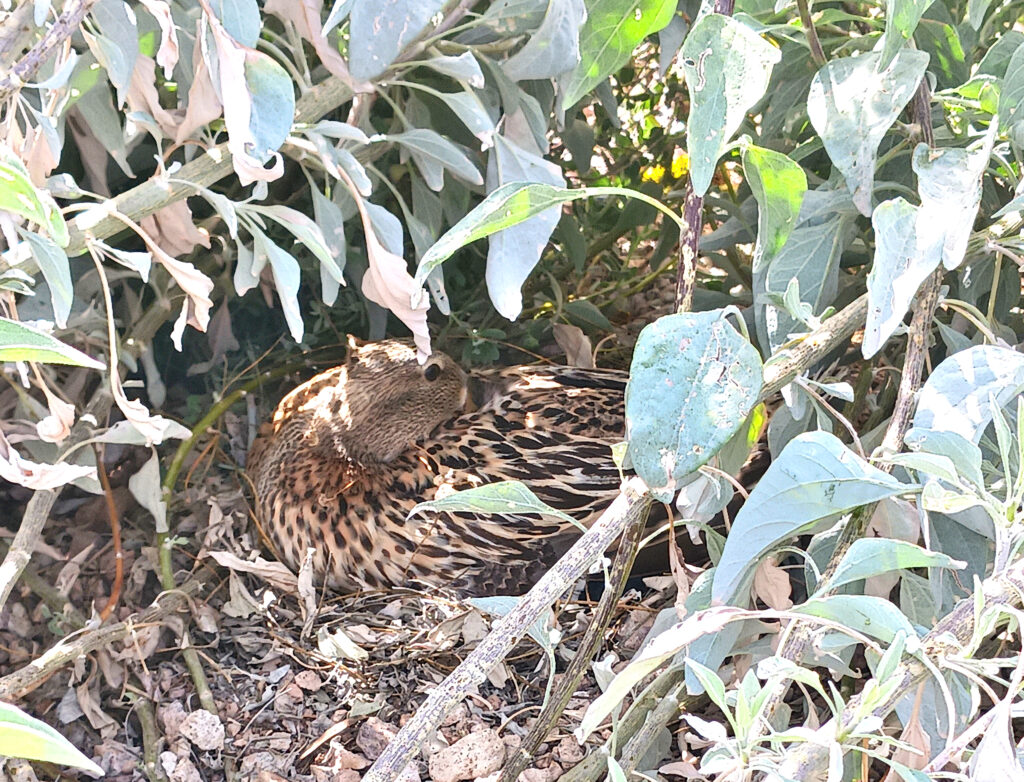Prologue to our story
Since April is Arizona Water Awareness Month (WAM), we felt like it was a great time to focus on watering properly. WAM is an annual outreach effort that aims to spread the word about the value of conserving the Southwest’s most precious natural resource, water. A WAM website, first launched in 2011 by the Arizona Department of Water Resources, gathers water conservation ideas, program, and activities taking place around the state. There are hundreds of ways in thirty days that residents and businesses can learn not only about where their water comes from but also the steps they can take to become more water-efficient. Water – Use It Wisely wanted to share this fun blog below with our readers to emphasize just how many ways we can all become more water aware.
“Inspector Leak” breaks this water-waste case!
Kneeling on the dry, dusty earth, Inspector Leak was distraught. “All dead,”… he murmured to himself. “This was so needless.” He reached over to touch the corpse of an ironwood sapling. Its yellowed leaves fell sullenly to the ground. He could tell it had been wounded for a while; its roots were blackened and rotting. As he surveyed the scene around him, he noticed that several other garden family members were suffering the same fate.
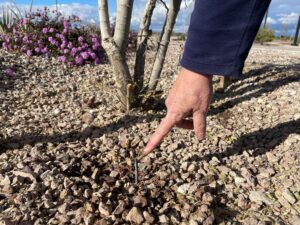
Eager to find the cause of this murderous rampage, he probed his fingers into the earth. He could feel excessive moisture even though it was 110 degrees outside. He made an indentation into the soil. Slowly, water seeped into the depression, confirming his worse fear… “Overwatering!” he declared. His observations quickly became a quest to figure out how this model xeriscape garden could become the scene of such mass destruction.
As he explored the area, he quickly noticed a probable culprit. Wiggling out of the ground was a drip irrigation spaghetti tube with an emitter missing. The inspector took note. He wrote down a question – “no scheduled maintenance plan?” “Still,” he thought to himself, “a single emitter could not account for this much damage.” Always prepared, he reached into his pocket and inserted a goof plug into the spaghetti tube and made a note to come back with the proper sized emitter.
He followed the rest of the drip irrigation line, inspecting each emitter as he walked. The rest of the emitters were intact. Still, there seemed to be excessive moisture near most of the plants along the line. Taking a closer look, he realized all the installed emitters had a flow rate of 4.0 gph, and there were three emitters at each small bush. Startled by his discovery, he made a mental note of the impacted area and made a beeline for the irrigation controller. He knew that time was critical for the remaining plants whose roots were suffering from lack of oxygen.
He turned the knob on the irrigation controller to look at the frequency of water. It was set to every other day. He then checked the duration, or run time, for that zone. It was set to 1 hour. He did some mental calculations… “three emitters at 4.0 gph for one hour; that’s 12 gallons of water every other day!”
He knew that these xeriscape plants thrived in the desert. They only need minimal water after being established. Generally, desert adapted trees and shrubs can go 7-21 days between watering during the hottest times of the season. Clearly, these plants were being watered too often. He was surprised they had held out this long.
He took the liberty of resetting the irrigation controller to once per week for now. He knew the water would have to be gradually backed down to get the plants on a normal watering schedule. He pulled out his cell phone, opened up his calendar app and made a note about reducing the frequency of watering. He thought that within a few months the plants could be back on a healthy water schedule. He knew an aggressive watering schedule change would be best handled over the upcoming cooler season when the plant’s watering needs naturally slow.
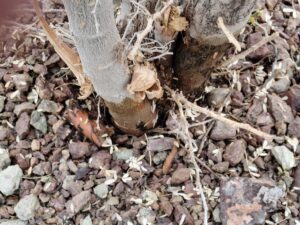
His next step was to check how deeply the plants were being watered. Conveniently, the irrigation system had run that morning. He walked back to his car to get his soil probe. He knew the 1-2-3 rule of watering: You water one foot deep for small plants (groundcovers, cacti, annuals); two feet deep for medium plants (shrubs); and three feet deep for large plants (trees).
He plunged his soil probe into the soil, and it easily sank to its 3 foot hilt. “Wow!” he thought, “this soil is wet!” He knew that most desert adapted shrubs should only be watered to a depth of 2 feet. Unfortunately, the only thing he could do at this point was to let nature take its course to dry the soil. “I hope they survive”, he uttered to himself.
He wondered about the soil composition. He knew that different types of soils hold different amounts of water which also influences the frequency and duration of watering. Soil textures vary depending on the amount of sand, loam, and clay within them. Sandy soils have larger spaces between the sand particles which allows water to easily flow to a plant’s root zone. The challenge with sandy soils is you need to water more often, but you use less water when you do water.
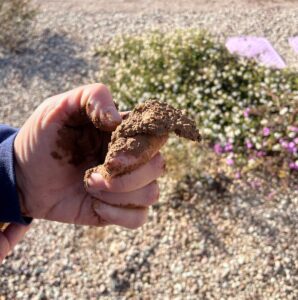
On the other hand, it takes a very long time for water to penetrate into clay soil. In this case, it’s often best to have an irrigation controller with a cycle-soak feature to allow more time for the water to work its way into the soil and prevent needless run-off. Once clay soil is moist, it holds the water longer and you don’t need to water as often.
He knelt down and dug a few inches down into the earth. He then placed a small handful of soil in his palm and slowly added a few drops of water while kneading the soil in his hand. He worked the soil between his thumb and forefinger and then into a ribbon which spread over his hand. He knew that the longer the ribbon extended before breaking off, the more clay it contained. His ribbon went about 2 inches before breaking off. The soil clearly had a lot of clay.
With this new information, he knew his investigation could now be handed over to the xeriscape manager. To determine a proper watering schedule, the manager would need to do soil percolation tests around the impacted garden areas to determine drainage rates for the soil. Once this information was known, the proper watering schedule could finally be programmed.
He had done all he could. He stood up and brushed the dirt off of his pants. Finally at peace, he said, “Another watering crisis solved.”
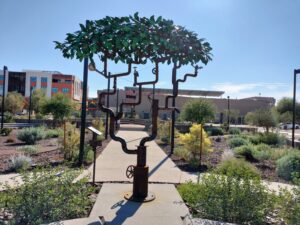
Epilogue to our story
While the author took some artistic liberties with this mystery watering scenario, this story is based upon their budding experience with a newly installed Xeriscape Demonstration Garden in the City of Surprise. Between COVID cost over-runs, supply chain issues, and very delayed irrigation final plans, the garden – and their water portfolio team – was nothing short of resilient! They wanted to share this story to let you know that even the best designed gardens can have challenges, especially when it comes to watering properly.
They’re glad to report that persistence in identifying which irrigation line feeds which plants has helped to get back on track with implementing the correct watering schedule for the plants. Now, the garden plants are popping with color and attracting happy pollinators and other critters. Visit the Surprise Xeriscape Demonstration Garden at 16126 N. Civic Center Plaza and contact Conservewater@surpriseaz.gov if you’d like a group tour. If you are ready to make sure that your own landscape watering is on track, be sure to visit our watering guide pages to learn about how much and how often to water your landscape.
*Note: Are you watering properly? Our featured header photo shows a duck nesting in one of the plants in the landscape. If you see cattails or ducks in your landscape, you are likely watering too much!
Sandra Hurlbut is the Water Conservation Specialist for the City of Surprise, one of nineteen Water– Use It Wisely partners to offer water-saving advice and programs. Formerly with the University of Arizona Cooperative Extension system, she led water education and conservation programs in Maricopa County with Arizona Project WET and in Cochise County with the Water Wise program.


